When Girona emerged victorious in May against Xavi’s Barcelona, it did not only signify another fiercely contested Catalan derby but also represented a once unthinkable achievement for Girona.
The 4-2 win secured Girona’s place in this season’s UEFA Champions League competition—a fairy tale ending for Míchel’s side, who consistently defied the odds to complete such a historic campaign.
Fast forward to today, and things aren’t going exactly as planned at Montilivi.
There has been a clear decline in performance, and there have been honest reflections from the manager on how Girona must adapt.
Girona currently occupy 10th place in the La Liga standings, whilst a disappointing European run has left them in 29th place in the new Champions League format.
Whilst it may have been premature to expect a similar level of performance to last season, a disappointing summer window has left the club needing to reestablish their footballing identity and tactics.
Our tactical analysis will begin to highlight some of the reasons why their performances have dwindled this campaign, especially when suffering devastating losses on the continental stage.
All hope is not lost, though.
Our analysis will also identify some of their key strengths, which could prove crucial when they look to pick up more points later in the season.
Girona Summer Recruitment
Discussing Girona’s recent struggles without mentioning the summer window whirlwind they experienced would be a huge oversight.
Their Champions League qualification was a blessing and a curse for many reasons, but the loss of key performers over the summer has been a huge blow that the club has yet to overcome.
The transfer of La Liga top goalscorer Artem Dovbyk to Roma signified the loss of Michel’s talismanic figure, which carried the Girona attacking load for the majority of their success last campaign.
Abel Ruiz Vs Artem Dovbyk Radar Map
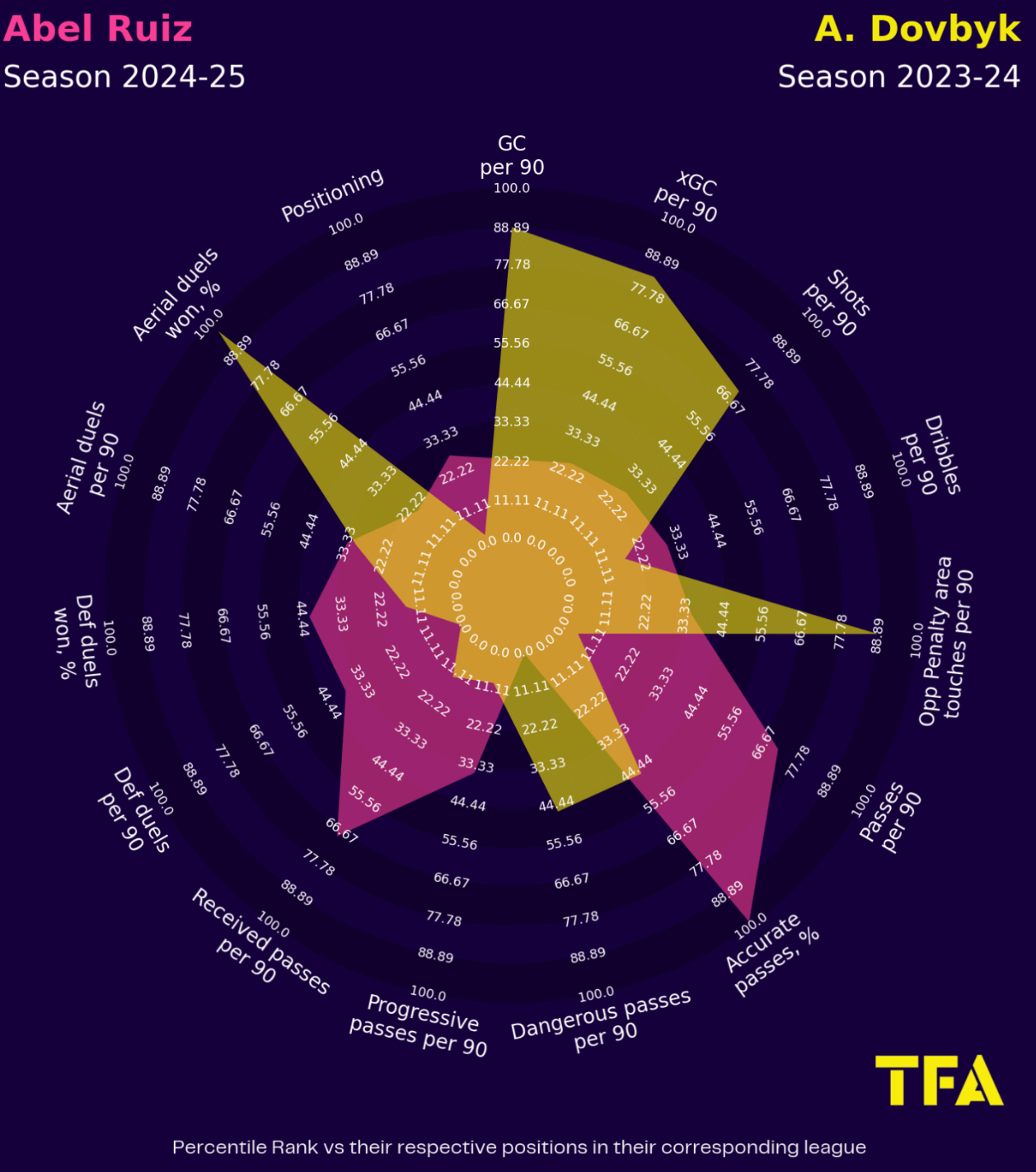
However, the loss of their engine room in midfield had perhaps a more detrimental effect on their overall functioning and comfort with the ball, as they saw Aleix Garcia move to Bundesliga champions Bayer Leverkusen.
While many eagerly anticipated Girona’s chance to compete with world-class competition from around Europe, the added loss of players like Savinho, Yan Couto and Eric Garcia has left the Catalan side largely stripped of their most influential assets.
Incoming transfers have yet to hit the ground running at Girona, with many having to mould their game to suit Míchel’s bold and front-footed approach.
Girona’s Worrying Build-Up
One of the key features of Míchel’s possession-based style was Girona’s ball retention and ability to play out accurately and efficiently from their defensive line.
So far in the Champions League, we have seen this done in various styles, with teams utilising some unconventional roles and personnel to escape opposition pressure when operating deep within their own half.
In Girona’s only UCL victory to date, we saw them build out from the back against Slovan Bratislava with a comfortable three-man defensive line, creating more of a 3-1-3-3 overall, with a single pivot dropping in to support progression.
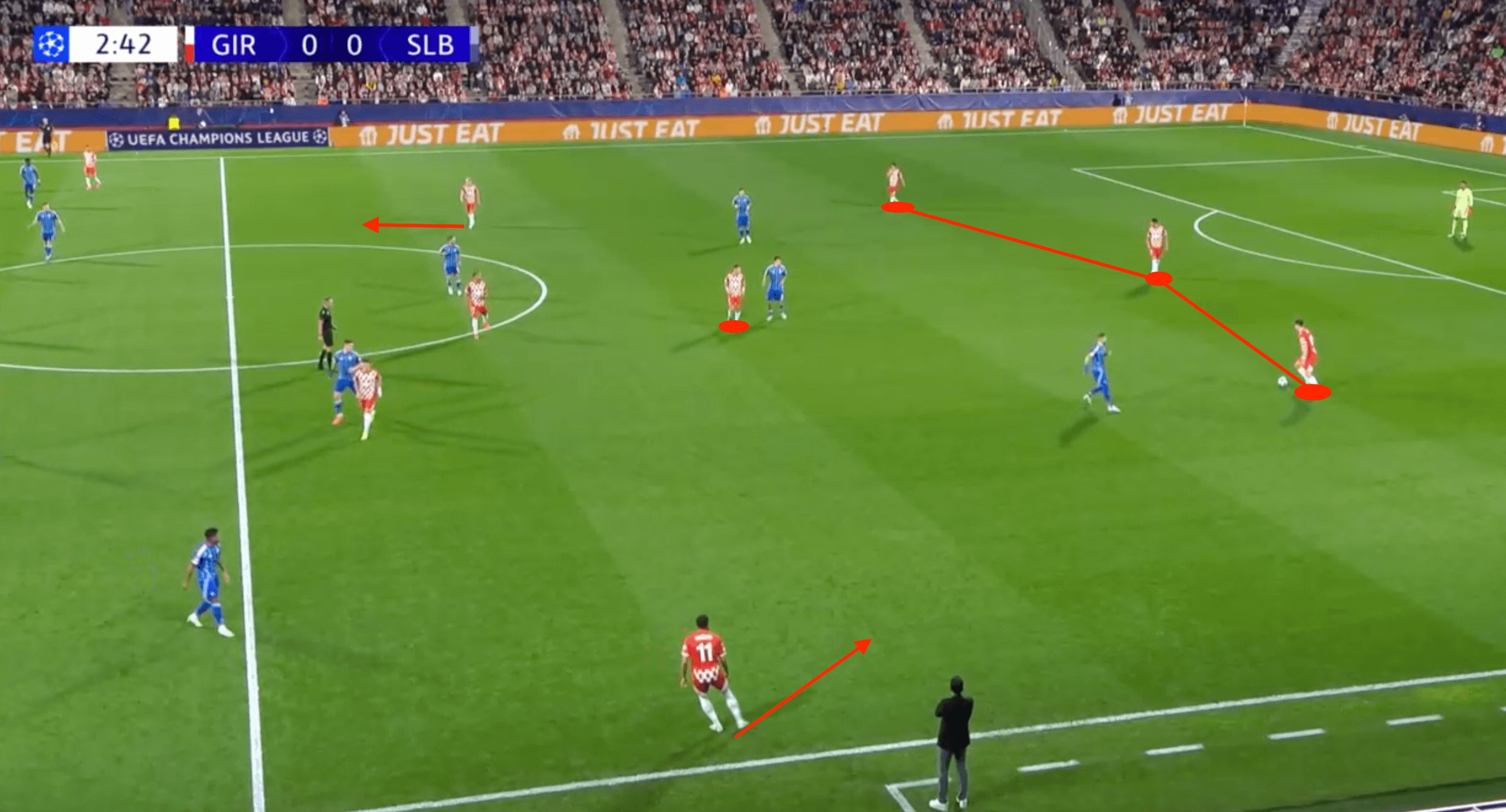
When Slovan Bratislava were more concerned with a passive pressing style, as shown in the image above, Girona were confident in their ball-playing abilities and could pick out passing outlets to advance.
Van de Beek was ready to receive between the lines, and Danjuma held his width for a direct outlet ball.
Girona’s problems have been caused by facing a higher press.
Their attempts to combat suffocation from the opposition forwards have been largely ineffective.
When opportunities to work the ball wide are unavailable due to the advanced positioning of their full-backs, Gazzaniga’s distribution into the central areas of the pitch has raised concern and consistently resulted in high turnovers for the opposition, with Herrera dispossessed cheaply in the example below.
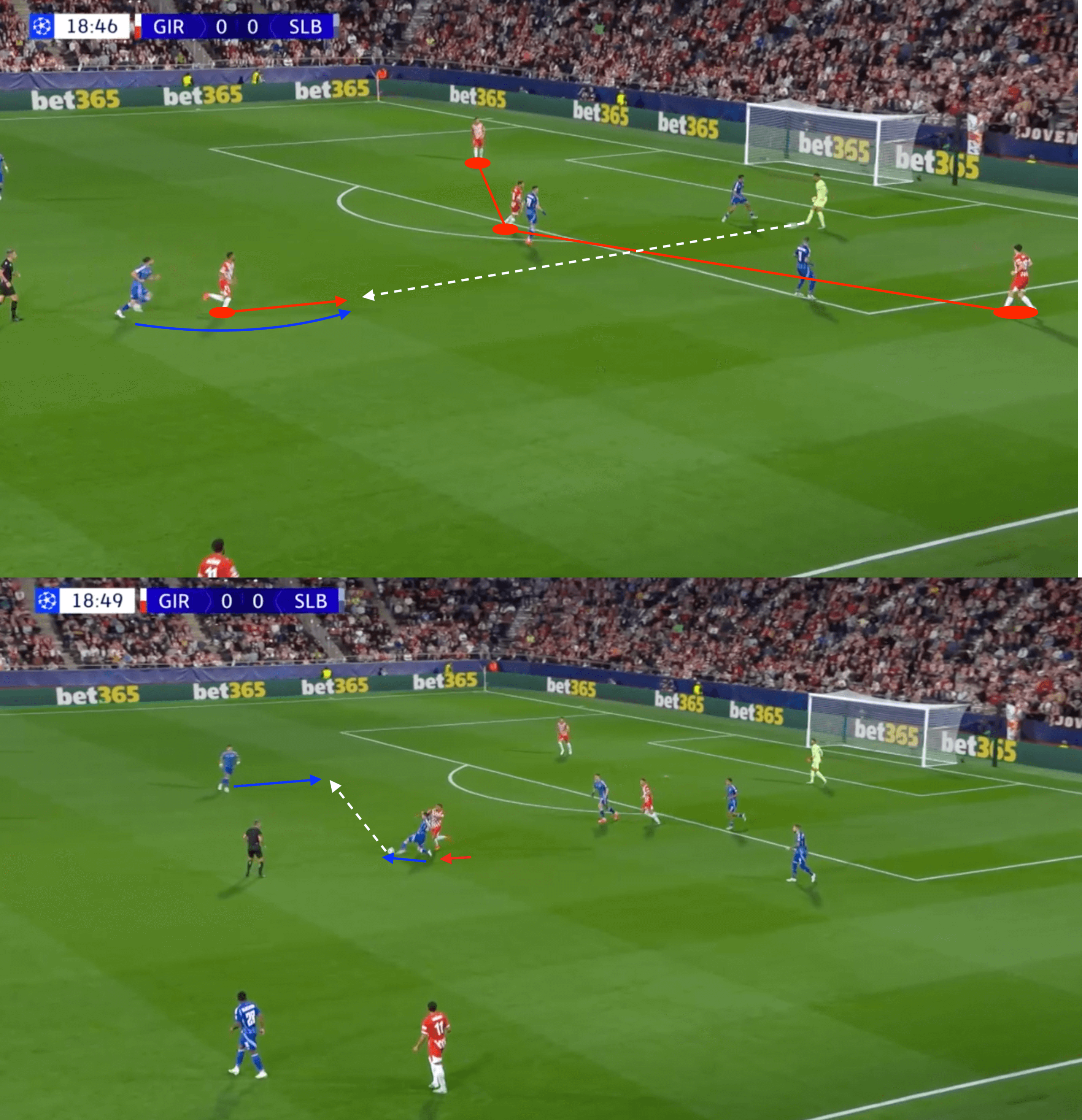
To potentially combat Girona’s midfield isolation, Míchel has also experimented with a more 3-2 shape in their deep build-up, with Gazzaniga joining the defensive line to allow a double pivot at the base of their midfield.
Whilst this may sound like an effective resolution with another presence within the central areas, teams in the Champions League have exploited Girona’s need to circulate possession within the defensive line by pressing even higher up the pitch.
This was particularly evident in a cagey affair at home to Feyenoord, where the away side looked to exploit Girona’s weaknesses when facing man-to-man pressure.
Having received the ball towards the left channel, Krejci could not accurately identify an optimal passing outlet due to Feyenoord’s tight man marking, allowing the forwards to reclaim possession and quickly break into the Girona penalty area.
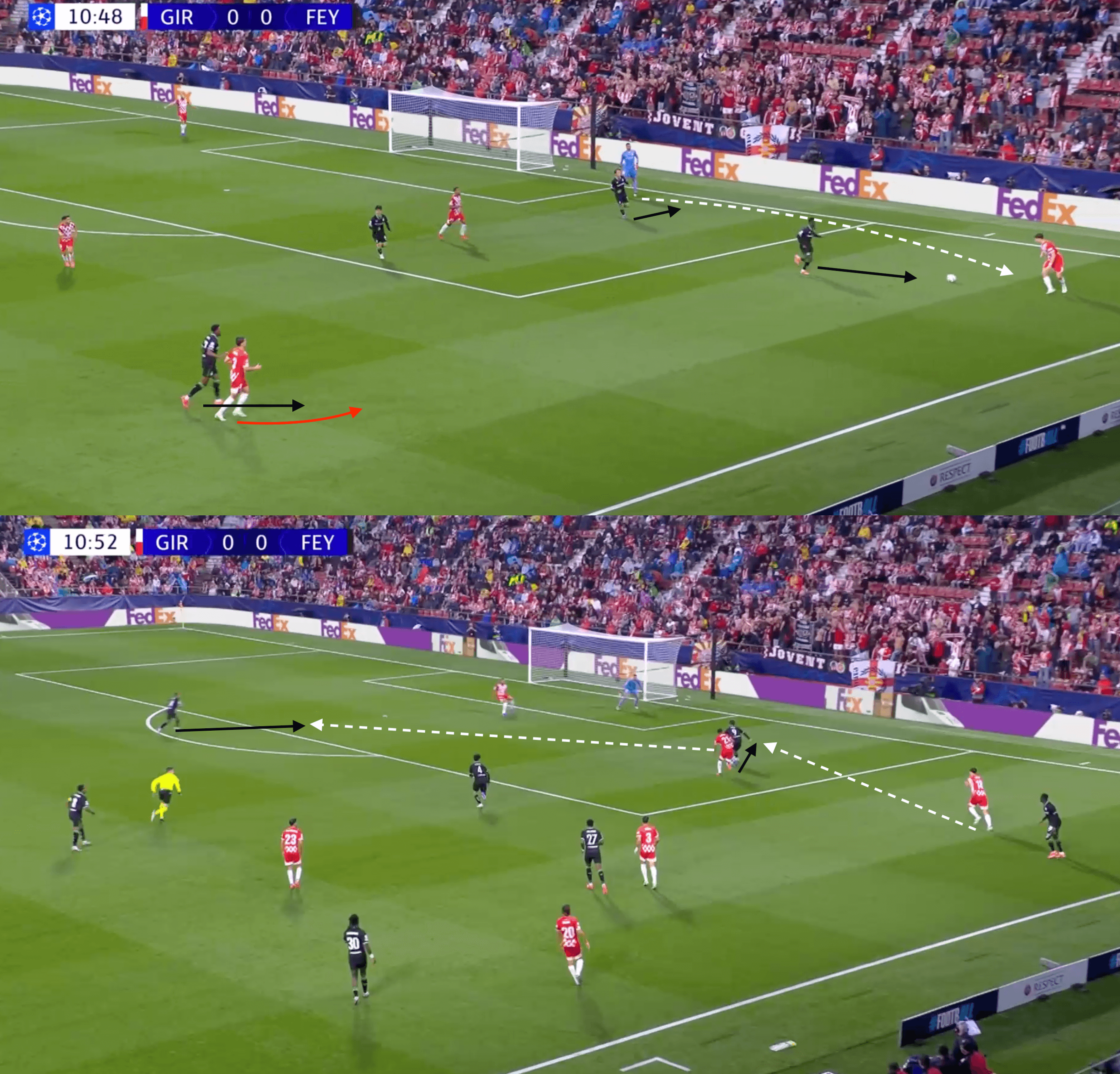
Later in the match, Feyenoord were equally as impactful when focusing their pressing inwards, almost offering the two Girona central defenders the opportunity to progress down the flanks.
With a clear intent to progress through the centre with the likes of Yangel Herrera and Iván Martin, Feyenoord used a compact 4-4-2 pressing shape, almost creating a box shape around the Girona double pivot.
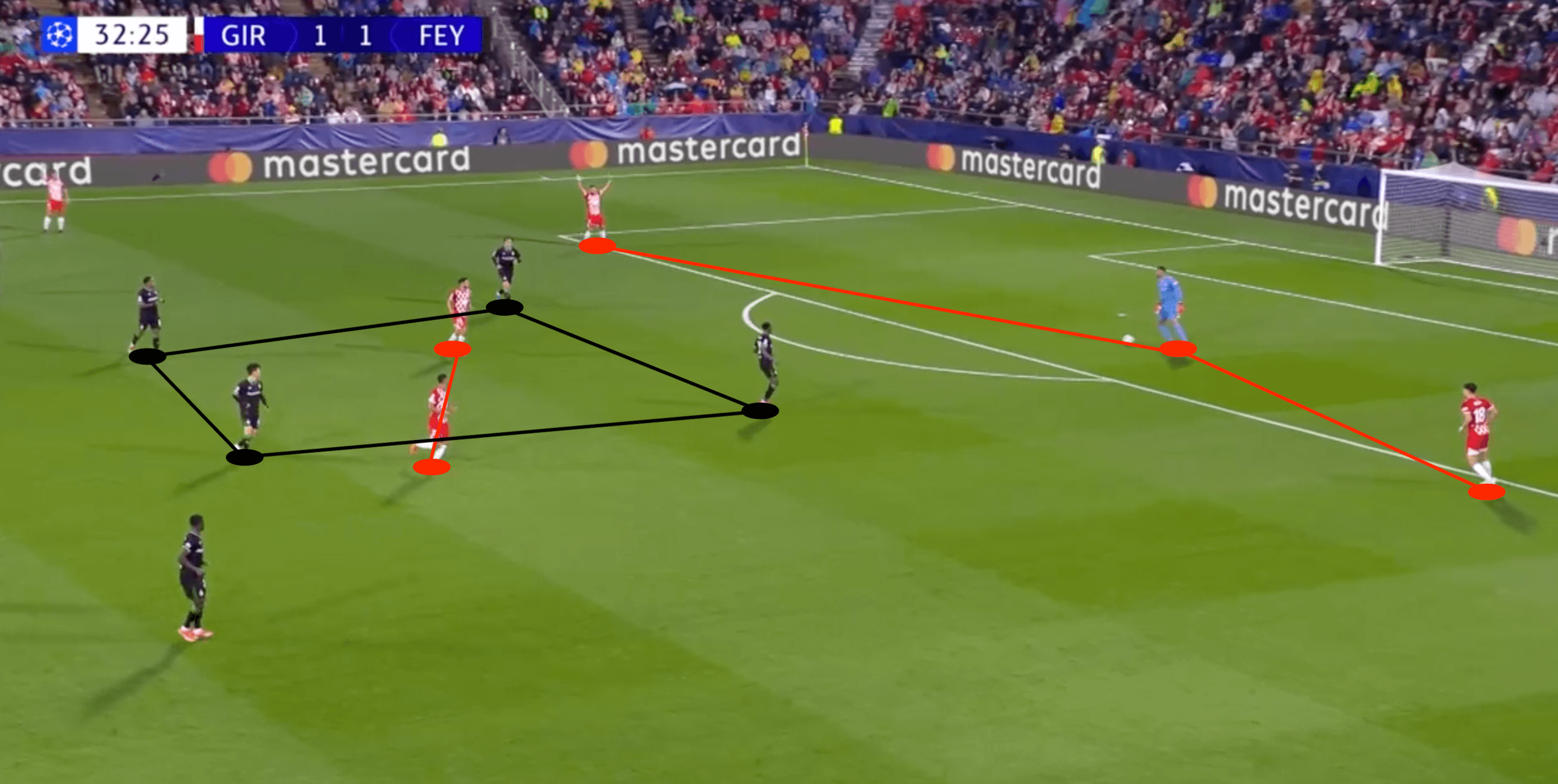
As the wingers were ready to shadow and patrol the space between the wide full-backs and the interior of the pitch, Girona were forced into risky progressive passes that Feyenoord could intercept and quickly transform into huge goal-scoring chances.
Antoni Milambo capitalised on a mistake made by David Lopez to take the lead.
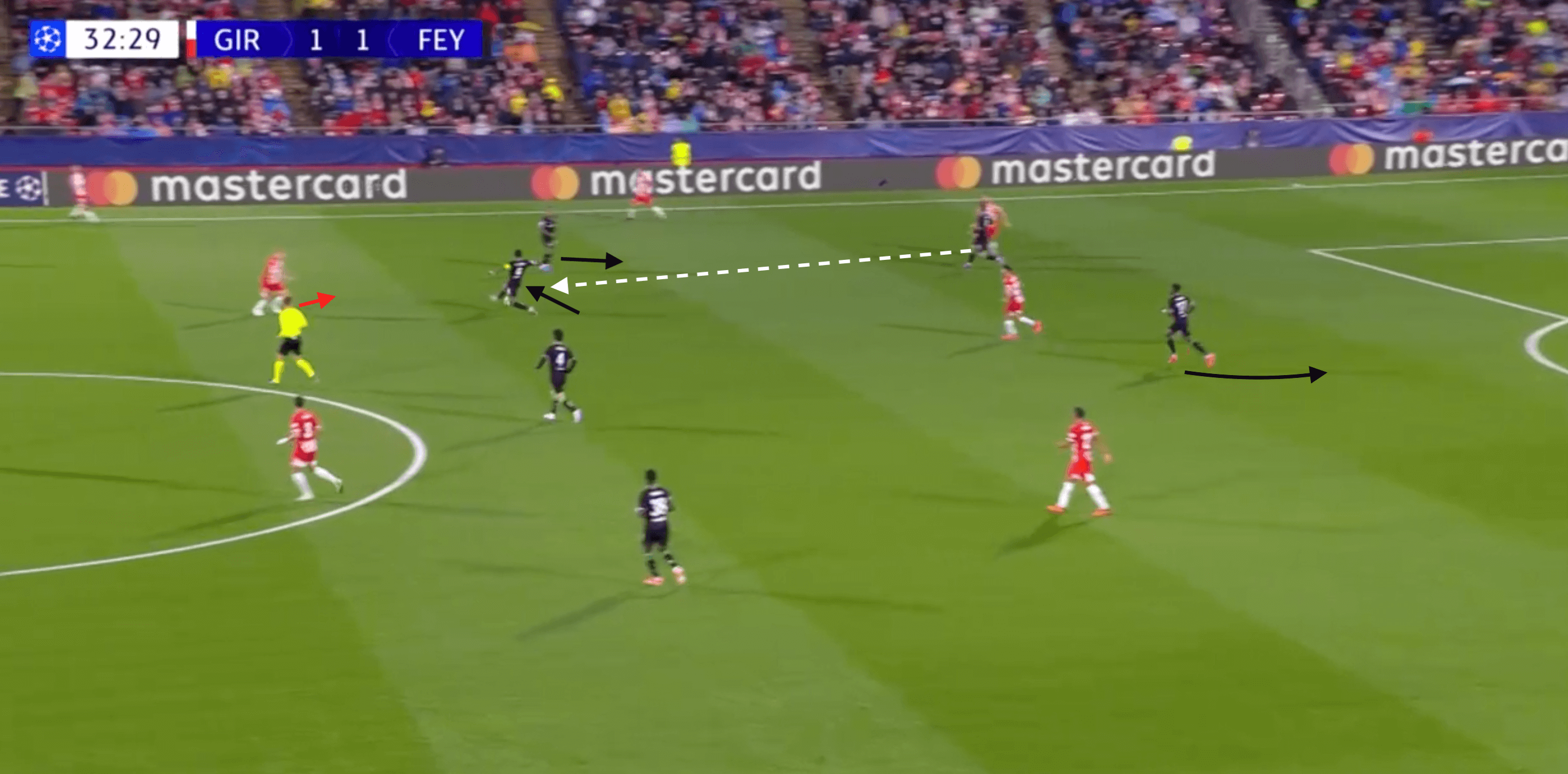
One of the most understated losses amongst the squad turnover this summer was central defender Eric Garcia, with the Spaniard returning to Barcelona after a successful loan spell.
Garcia typified the central defender profile that worked so well for Míchel, having ranked within the 98th and 95th percentile for progressive passes and carries, respectively.
This is a huge loss for a Girona side that could use some forward-thinking to escape pressure.
Exposed In Behind
It was a clear feature of Girona’s overall play last season, but the changes in personnel have further exacerbated the detriment of Girona’s defenders being caught out of position.
Girona has struggled with their ageing defensive line, which consists of the 35-year-old David Lopez and the 34-year-old Daley Blind through the middle.
Míchel’s defensive game plan revolves around maintaining a high defensive line and a proactive defensive style when counter-pressing and looking to dispossess their opposition as high as possible.
Using their full-backs in more advanced positions is incredibly helpful when looking to counter-press quickly.
Still, it ultimately allows the opposition to stretch the Girona backline, which has a fairly weak rest defence.
Take, for example, their visit to the Parc de Princes, where we saw David Lopez looking to engage extremely high up the pitch to allow Girona to maintain possession within the final third- even with the match at a stalemate.
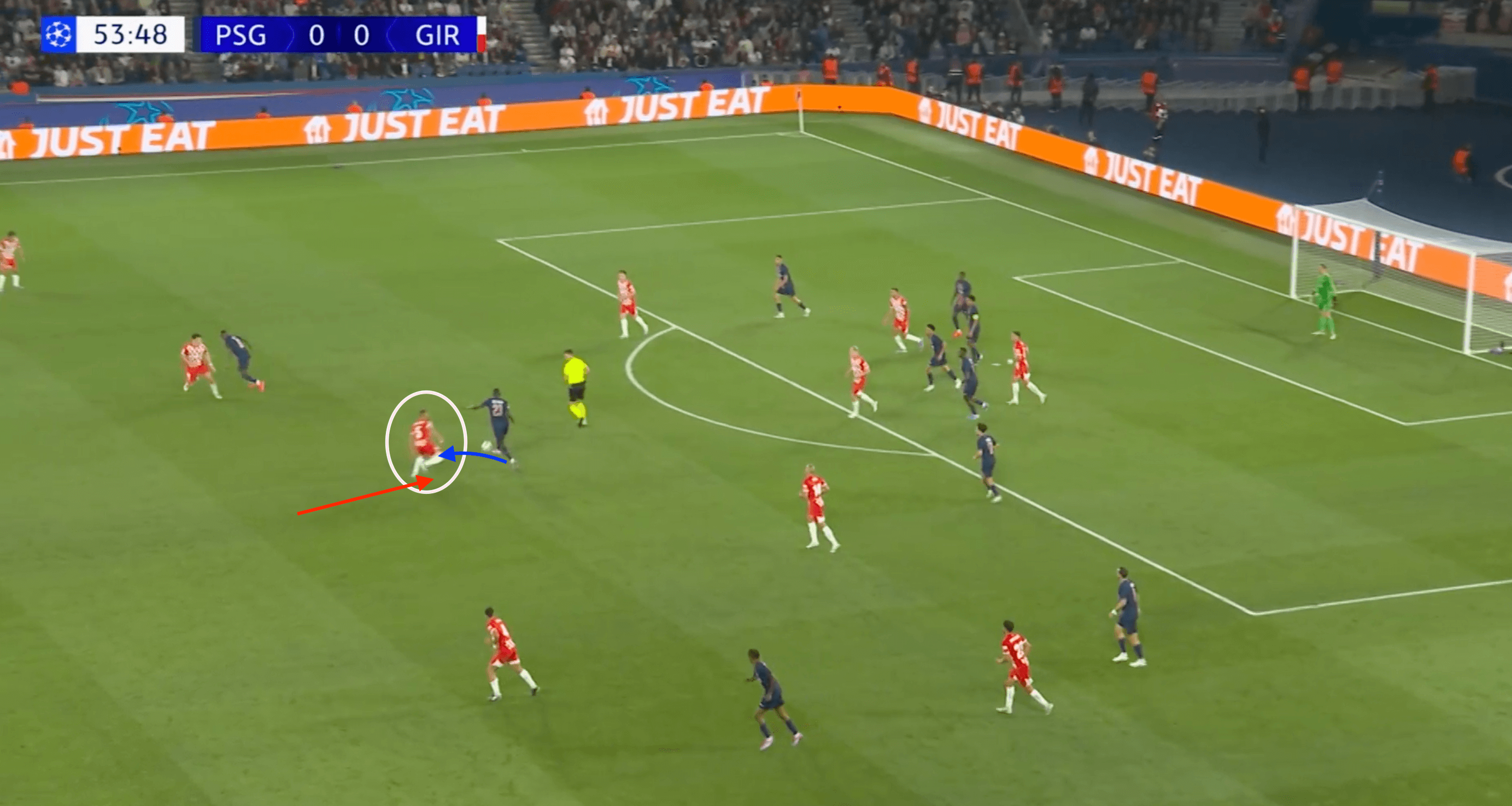
However, we quickly begin to see that once Kolo Muani was able to shift the ball past the onrushing defender quickly, PSG posed an extreme attacking threat to Girona with a 3v2 in transition, allowing both Barcola and Dembele the opportunity to utilise their main physical strengths when attacking open space.
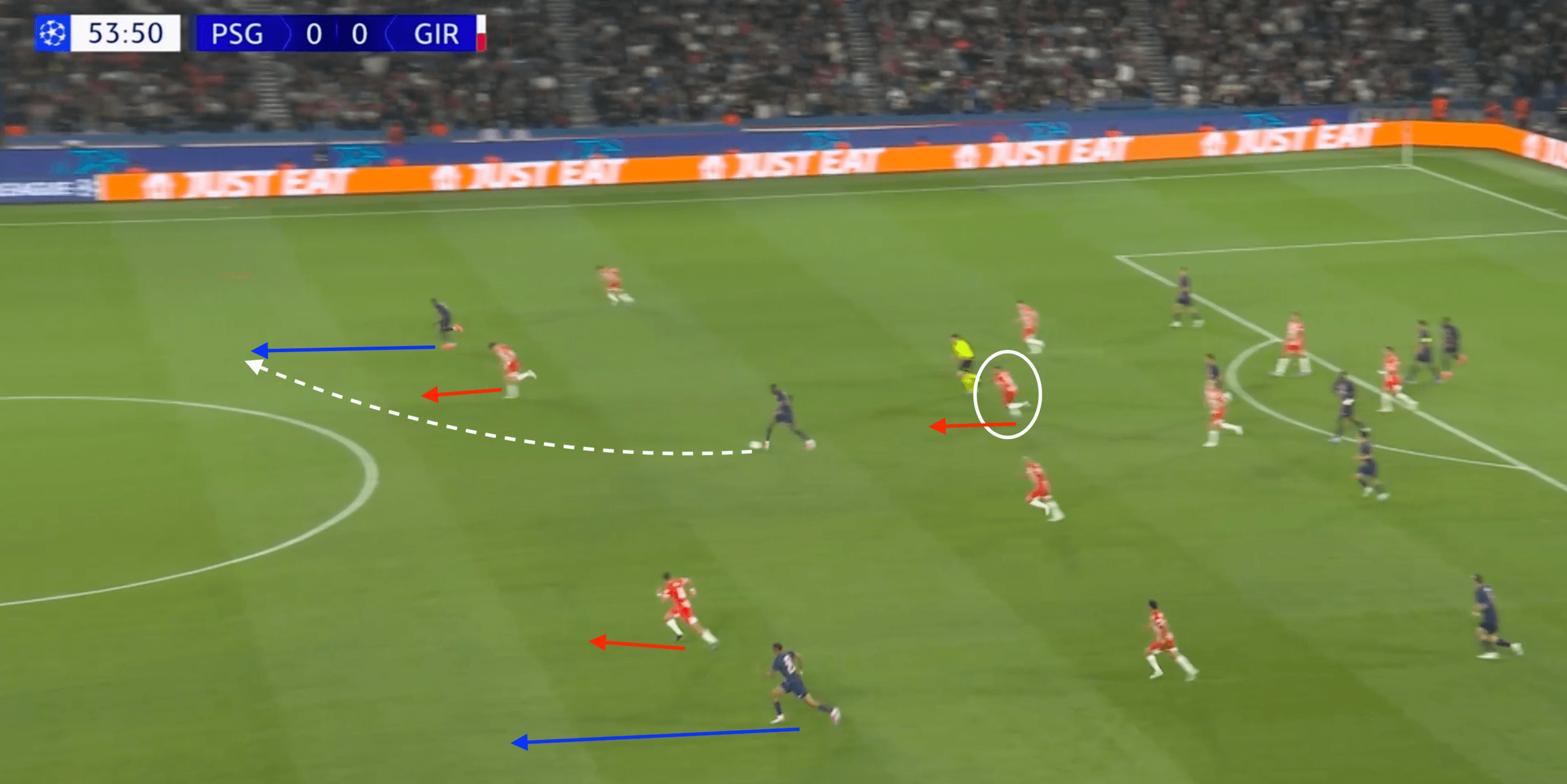
Whilst their blushes were spared on that occasion, PSV showcased a similar exploitation in their convincing 4-0 victory in Eindhoven.
As Noa Lang carries the ball along the left flank, three Girona players are immediately drawn towards the Dutchman.
This, in turn, allows Tillman to attack the half-space and curve his run towards an opening on the left flank.
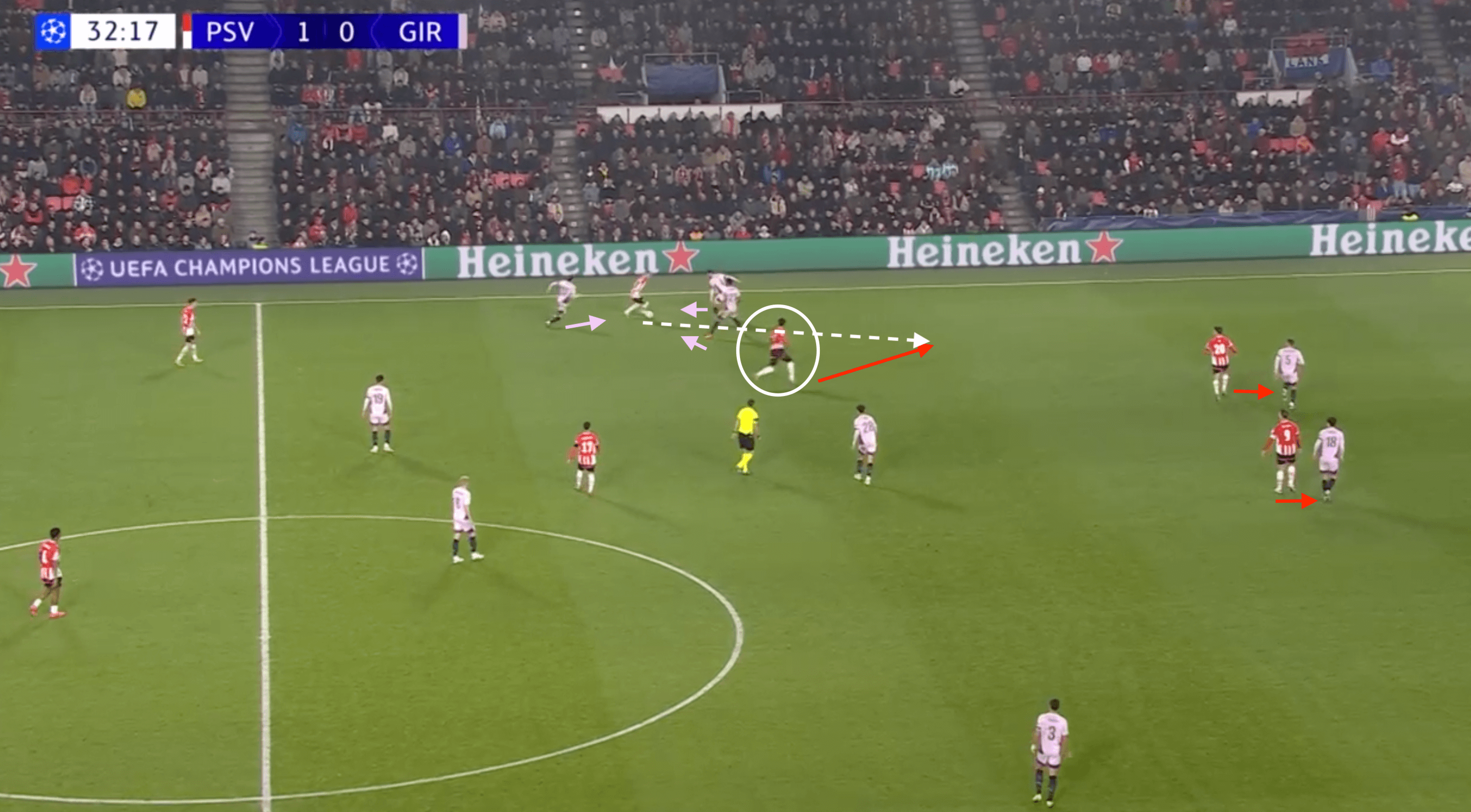
With both Girona’s central defenders occupied by Til and de Jong, Tillman was afforded enough time and space to drive into the penalty area and strike home past Gazzaniga—a moment from which Girona never really recovered in an embarrassing defeat.
The Gutiérrez Effect
We previously mentioned how Girona’s full-backs were often caught too high up the pitch, which damaged their solidity in transition.
But one of the most critical factors within Míchel’s offensive game plan has been the movement and creativity of left-back Miguel Gutiérrez, so you can’t really blame Girona for wanting one of their most influential players near the final third.
Gutiérrez operates well as a wide passing option when playing as a full-back in Girona’s deeper build-up.
Still, his inverted positioning within the middle to final thirds is what really captures fans’ attention.
The consistent performances of Gutiérrez have come at a perfect time for his manager, who is now relying on the young full-back, as injuries have immensely damaged his squad.
Gutiérrez possesses the technical qualities to operate within the Girona midfield.
He often floats between the lines to unsettle the opposition structure and allow his teammates to find space to play forward.
His 21.86 touches per 90 in the final third would indicate that is where the flying full-back is most effective, and we saw glimpses of this against a resolute PSG team.
Girona have been prone to creating overloads along the right flank and right half-space this season, which gives their left-sided players the freedom to invert more often and, most importantly, to take advantage of favourable numerical matchups should the ball be switched across the field.
Girona formed one of their quick passing sequences with Gutiérrez surging through the left half-space, using Gil’s width to attract more attention closer to the touchline.
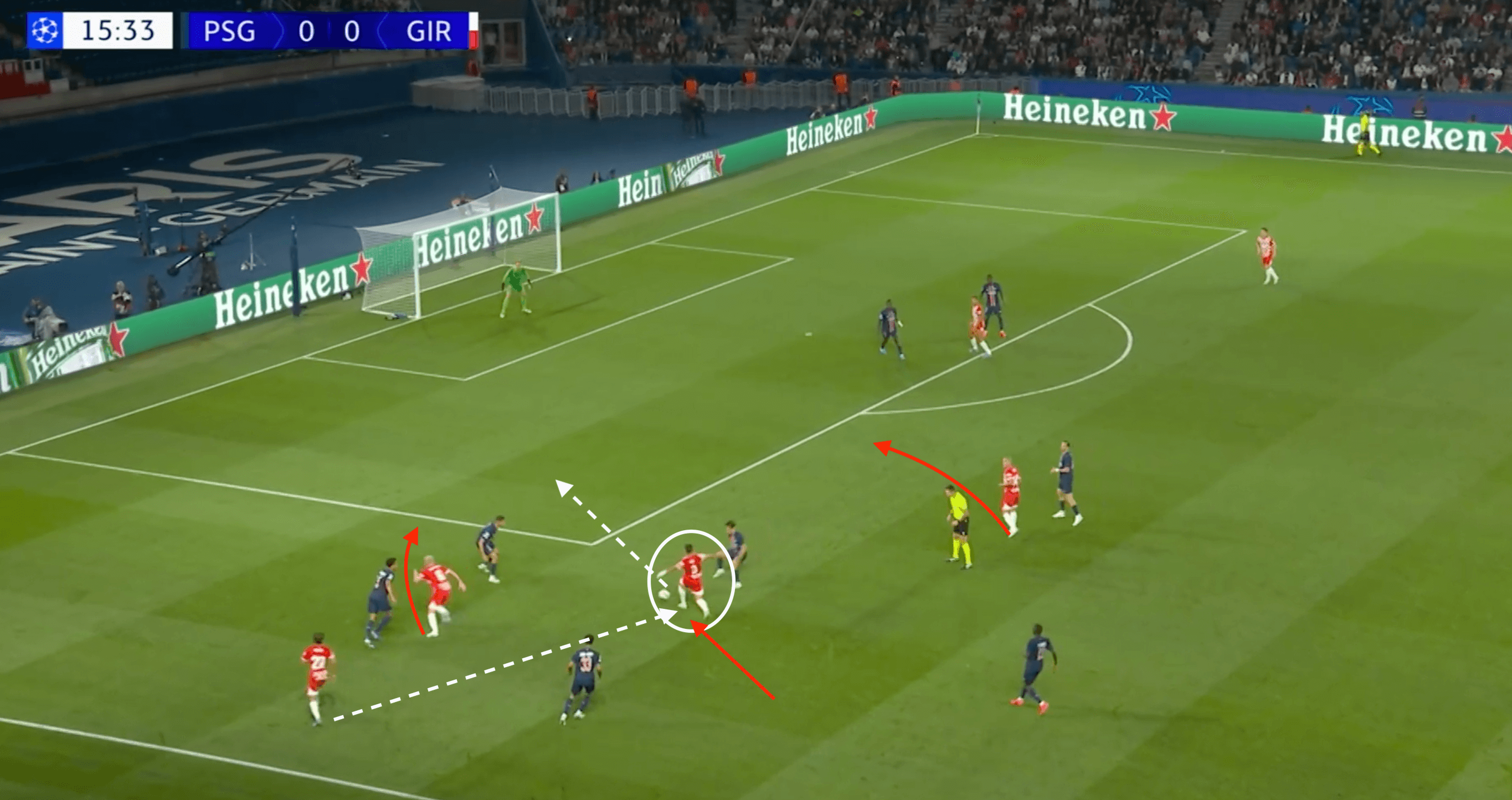
Incorporating Donny van de Beek’s lateral movement as that floating ‘number 10’, Girona was able to craft an impressive attacking move that seemed to catch the French champions on their heels, with impactful runners behind.
It highlights how Girona’s commitment to building their attacking play along the flanks can stretch some of the competition’s most high-profile defences and punish sides that defend in a similar proactive manner.
When working against a more conservative low block, Gutiérrez’s attacking play is supported by his positional intelligence.
The PSG example highlighted how the young Spaniard could operate in closer proximity to his winger.
However, with Slovan Bratislava’s defenders looking to protect the flanks, Gutiérrez could manoeuvre his way into an excellent central position to meet Danjuma’s cutback in stride, opening the scoring for his side.
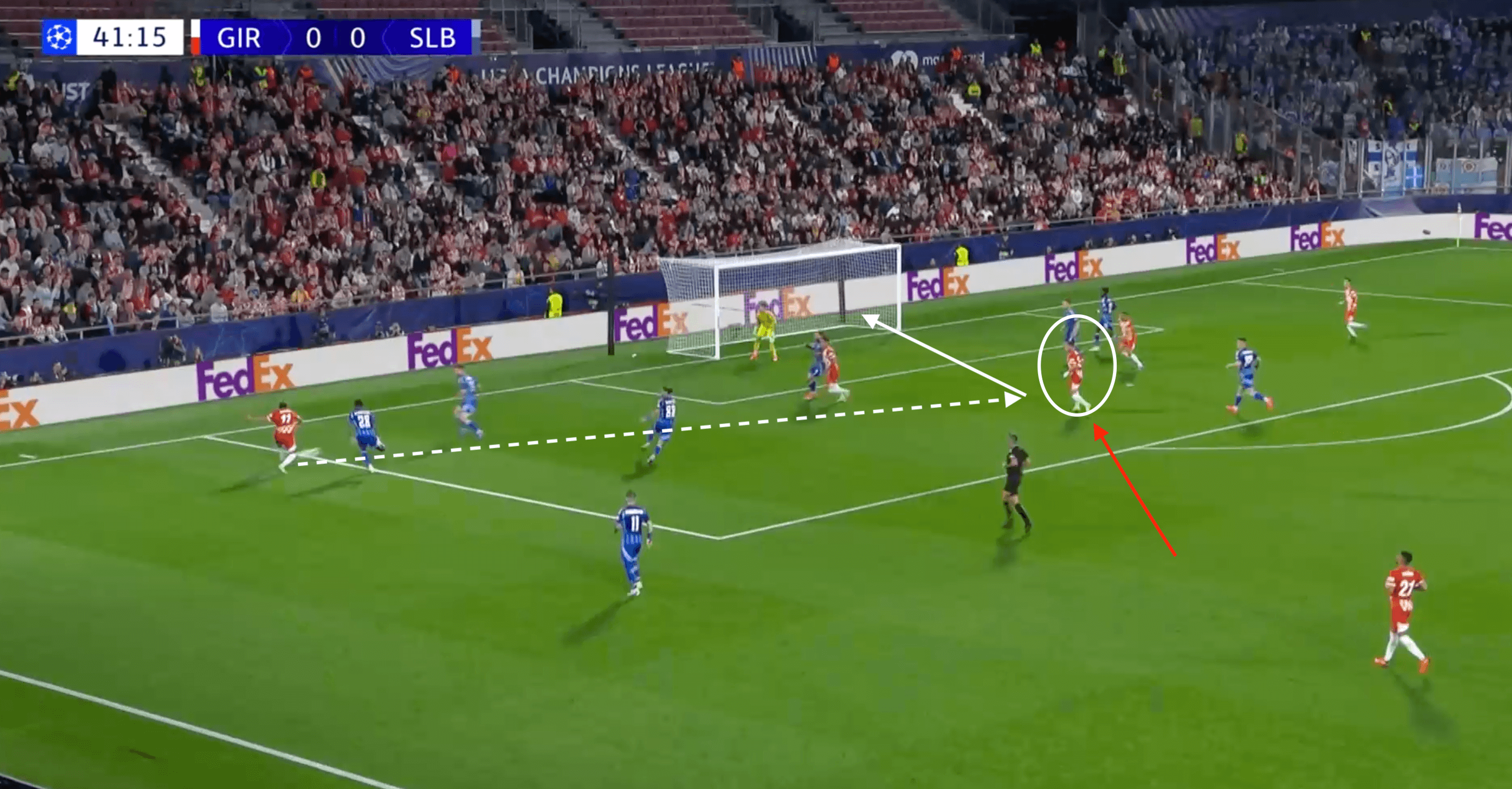
Even though the idea of an inverted full-back shouldering the attacking responsibility may seem quite farfetched, he does represent an important piece of Girona’s recent success and someone who can help accelerate squad cohesion as we progress through the season.
Although Gutiérrez’s defensive actions are not at the forefront of his expertise, his ability to record 5.71 ball recoveries per 90 minutes ranks within the top 12% of full-backs across Europe.
It highlights that whilst he is often ‘out of position’ as a left-back, the Spaniard showcases his effectiveness in tracking back and breaking up play, along with his desire to counter-press within opposition territory.
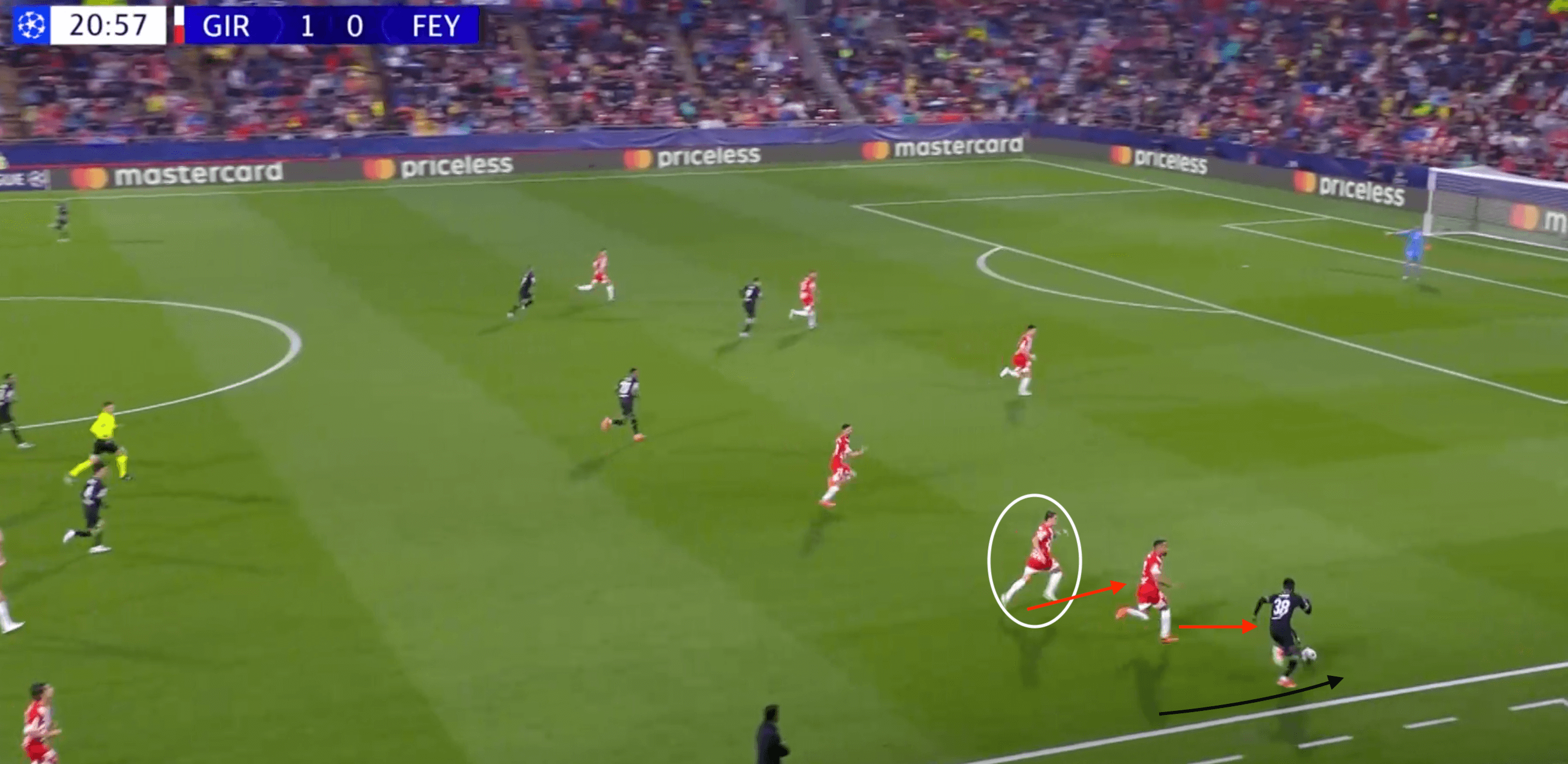
Conclusion
Girona’s European tour has been much more challenging than they could have ever imagined, and the quality of opposition continues to increase as we enter the latter stages of the Champions League.
It has been fantastic to witness Girona’s tactical nuances and unique nature on their run to a top-four La Liga finish.
Still, a lack of summer investment saw their overall quality quickly diminish, and new arrivals have yet to make their mark.
Having broken unwanted records in the Champions League for the most own goals scored in a single edition, it is fair to conclude that Girona’s continental performances can be attributed to both a stroke of misfortune and a clear regression in ability from last season.

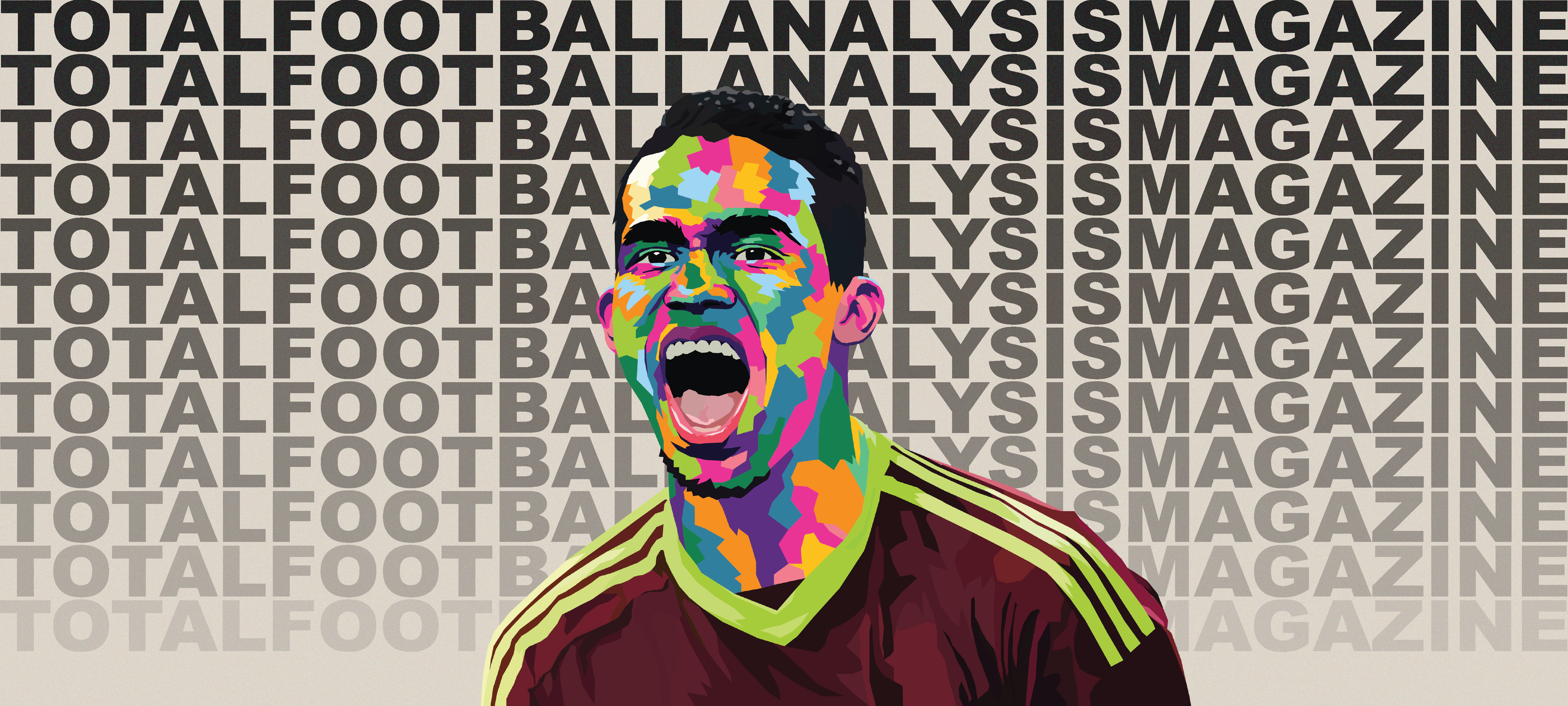



Comments